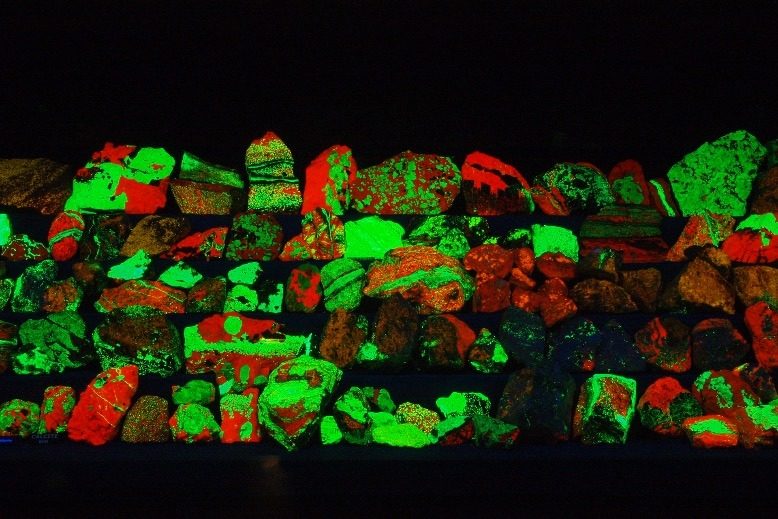
Whether you’re a newcomer or a longtime New Jersey resident, there’s always something fresh to discover in our state. Nowhere is that truer than at our museums.
With that in mind, New Jersey Monthly writers set out on a mission to explore the state’s more under-the-radar museums, and compile the ultimate guide of places to visit.
Along the way, we found everything from bugs to pop-culture relics to incredible pieces of Garden State history. We also dug into the permanent collections at some of the larger, more well-known museums, where we found treasure after treasure.
Happy exploring!
POP CULTURE
TiLT: A Tracy Lee Stum Museum
East Rutherford
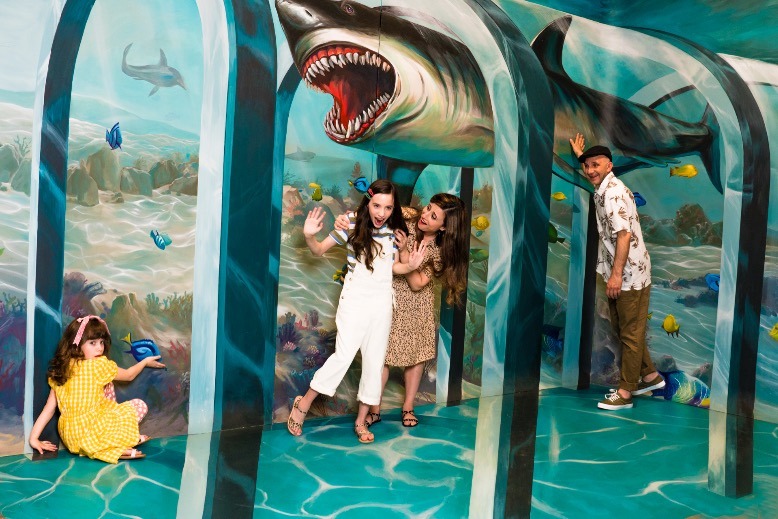
The TiLT Museum features a jaw-dropping collection of murals, like this Great White Shark. Photo courtesy of TiLT Museum
You won’t believe your eyes when you visit this immersive museum at the American Dream mega-mall. TiLT features a series of vibrant murals created by award-winning artist Tracy Lee Stum. Providing more than just something to look at, Stum uses angles, well-placed cameras and photography tricks to let visitors become part of her world-class optical illusions. You can make it look as though you’re climbing up the Statue of Liberty, being eaten by a great white shark, or floating in space. There’s no shortage of imagination (or photo opps) at TiLT, making this museum perfect for children and Instagrammers alike. —Gary Phillips
1 American Dream Way; 833-263-7326
Doo Wop Experience Museum and Neon Sign Garden
Wildwood
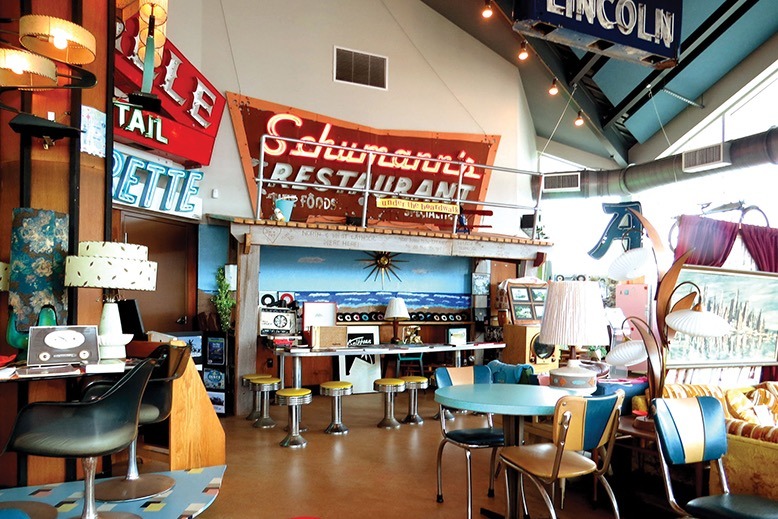
Grab a refreshment at the Doo Wop museum’s retro-style malt shop. Photo courtesy of Doo Wop Preservation League
Packed with cool artifacts, fascinating history and bright neon lights, this Wildwood museum is a celebration of architecture, design, music, pop culture and everything else that made the city famous in its 1950s and 1960s heyday (which is when doo wop music became popular). Inside, check out memorabilia, as well as the retro-style malt shop; outside, experience the Neon Sign Garden, a display of fully restored and reassembled signs from classic Wildwood motels that were rescued from places that have since been demolished. The museum is open seasonally, from the end of April until mid-October, and also offers bus tours of Wildwood’s motels and landmarks three nights a week. —Jacqueline Mroz
4500 Ocean Avenue; 609-551-2289

Buy our March 2022 issue here. Cover illustration by Matt Herring; Springsteen photo courtesy of Luke MacGregor/Reuters.
QUIRKY & WACKY
Insectropolis
Toms River
As museums go, Insectropolis is smaller than most. But then, so are the treasures it showcases—which, as you might suspect, are bugs, represented here in all their wild diversity. Laid out as a miniature city, the museum includes an airport of highly efficient flying machines (bees); a radio station broadcasting insect songs and sounds; Creepy Cavern, where arthropods dwell; and a host of other buggy landmarks. If you’d like to meet (and even touch) a few of the city’s creepy, crawly residents, the museum’s knowledgeable staff will be happy to arrange introductions. —Leslie Garisto Pfaff
1761 Route 9; 732-349-7090
Burlington County Prison Museum
Mt. Holly
(Editor’s note: Museum is currently closed for repairs and is slated to reopen December 7.) Designed by Robert Mills, the same architect who gave us the Washington Monument, this austere museum served as a prison from 1811 until 1965. Visitors can tour the narrow cells that once held vagrants, thieves and murderers; seven of the latter were hanged in the exercise yard out back. Make sure to watch for the few remaining examples of prison graffiti, crude scrawls that hint at the deprivation suffered herein. And yes, the museum is haunted (or so we are told). —KS
128 High Street; 609-265-5476
Vintage Automobile Museum of New Jersey
Barnegat Bay
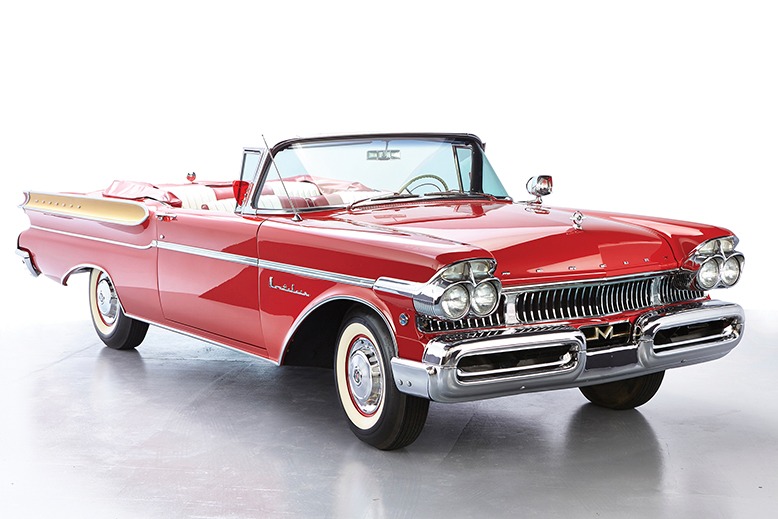
The classic cars at Point Pleasant’s Vintage Automobile Museum are swapped out every two months. Photo courtesy of Shutterstock/Kevin Tichenor
It’s located in a boatyard at the head of Barnegat Bay, next door to the New Jersey Museum of Boating, but inside the Vintage Automobile Museum, the only vehicles are those that travel on land—with fins, chrome and other bygone stylistic flourishes. The museum is small, with room for about seven or eight cars at a time, plus a wide assortment of automobilia, but the volunteers who run it have access to hundreds more, and they change every two months, so there’s always something new to see. —Kevin Coyne
1800 Bay Avenue, Building 13; 732-899-0012
New Jersey Shipwreck Museum
Wall
Did you know that the New Jersey coast has more than 4,200 known shipwrecks on its ocean floors? Rare artifacts, such as china from the Andrea Doria, flatware from the Morro Castle, and pieces of German submarine U-869 from World War II—all obtained from 13 confirmed shipwrecks dating back up to 300 years—are on display here. A dedicated team behind the scenes continuously works to find the missing puzzle pieces of unsolved shipwrecks, says Dan Lieb, a diver and museum staffer. —Falyn Stempler
2201 Macroni Road; 732-280-3000
SPORTS & GAMES
Yogi Berra Museum & Learning Center
Little Falls
The museum tells the life story of longtime Montclair resident Yogi Berra, from growing up in St. Louis to his first minor league contract ($90 a month) to his Hall of Fame career with the Yankees (and a nod to the Mets). Highlights include a complete set of 26 Yankee championship rings (and one watch); the original Joe DiMaggio and Mickey Mantle plaques from Yankee Stadium; and Berra’s three MVP awards—plus his baseball cards dating to 1947. Kids of all ages can handle vintage catcher’s mitts and grip game-used bats from Berra, Roberto Clemente, Derek Jeter and other greats. —KS
8 Yogi Berra Drive; 973-655-2378
United States Golf Association Museum
Far Hills
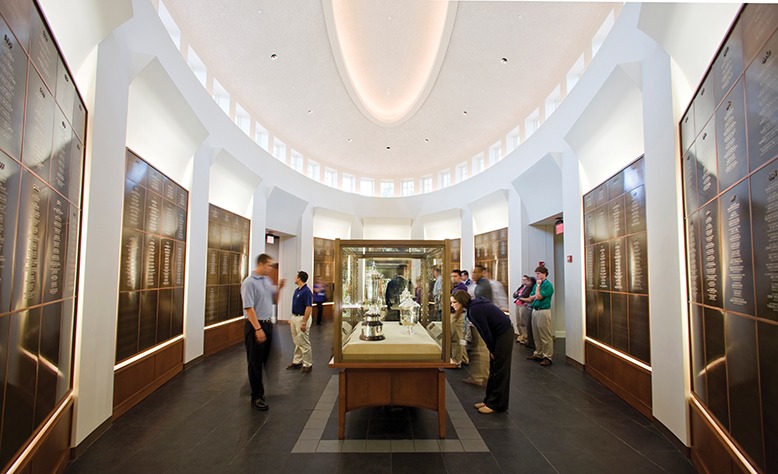
The USGA Museum in Far Hills tells the story of golf. Photo courtesy of USGA Museum
This golfers mecca (in a 100-year-old mansion) tells the story of the sport in meticulous displays of period equipment, photos and video. Five rooms are dedicated to individual legends—Bob Jones, Ben Hogan, Mickey Wright, Arnold Palmer and Jack Nicklaus—and the Hall of Champions has plaques for winners of all major USGA events since 1895. After touring the galleries, play the nine-hole putting green with replica antique balls and putters. —KS
77 Liberty Corner Road; 908-234-2300
Silverball Museum Arcade
Asbury Park
If you fancy yourself a pinball wizard, check out Silverball. It’s a tribute to pinball and arcade games of the past, with 150 options all set to play. (Patrons are charged at the door.) Pinball machines range in date from the 1950s, including the Gottlieb Knock Out, to current ones, like the 2020 Jersey Jack Guns N’ Roses game. Silverball takes great care with its games; it has a tech on hand for daily servicing, says Patty Barber, senior vice president of the museum. Artists come in to touch up the artwork inside the machines. “Asbury is both old and new, so we like to keep the retro feel of the place, but we also keep updating,” she says. Silverball is open year-round and has become an iconic part of the boardwalk. —JM
1000 Ocean Avenue; 732-774-4994
ART & ARTISANS
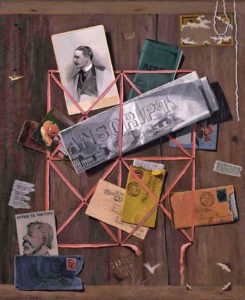
See John F. Peto’s works at the John F. Peto Studio Museum in Island Heights. Photo courtesy of Smithsonian American Art Museum
John F. Peto Studio Museum
Island Heights
The artist John F. Peto lived and worked in a Victorian, shingle-style house in Island Heights, the picturesque Methodist camp-meeting settlement on a hilly peninsula overlooking the Toms River, where he painted trompe l’oeil still-lifes that now hang in America’s most prominent art museums. The house stayed in his family for almost a century after his death in 1907 and is now a meticulously restored studio museum where you can see not just his paintings, but other items he painted, as well as rotating exhibits of other artists. —KC
102 Cedar Avenue; 732-929-4949
Hiram Blauvelt Art Museum
Oradell
The stalls in this 1893 carriage house once held thoroughbred horses. Today, as part of a museum dedicated to wildlife art, they are small galleries for large works, like a towering bronze ostrich by sculptor Bart Walter. The museum’s collection ranges from charcoals and oils to sculpted pieces, including Mary Taylor’s The She-Wolf, a menacing creation of welded steel rods. Also on display: an original 2-foot-wide edition of John James Audubon’s classic book Birds of America. —KS
705 Kinderkamack Road; 201-261-0012
Noyes Museum of Art
Atlantic City, Galloway, Hammonton
Originally opened in Galloway in 1983, this fine art museum, largely funded by Fred and Ethel Noyes of Smithville, was hard hit by financial challenges and in 2016 closed to the public. Reinventing itself in 2017 after having been acquired by Stockton University, the museum created affiliate sites and now display its collections at the Kramer Hall gallery at the university, the Seaview Golf Club in Galloway, and the Arts Garage and Noyes Gallery at the Claridge Hotel, both in Atlantic City. The collection showcases more than 3,000 paintings and sculptures, as well as many duck decoys. —Deborah P. Carter
Kramer Hall, 30 Front Street; 609-626-3420
Zimmerli Art Museum
New Brunswick
Located at Rutgers University, the Zimmerli features American art, from Alfred Bierstadt landscapes to modern works by Roy Lichtenstein. In an upstairs gallery, you can walk in and around Herbert Ferber’s curvaceous Environment for Sculpture. There’s also art from Asia and Europe, including an array of 36 amusing busts by the 19th-century caricaturist Honoré Daumier. Most fascinating is the world’s largest collection (20,000 works) of Soviet Noncomformist Art, from stark to satirical. —KS
71 Hamilton Street; 848-932-7237
Stickley Museum
Morris Plains
Housed in the former country estate of designer Gustav Stickley, a leading voice in the American Arts and Crafts movement, the museum features a collection of furniture and objects that were made or sold by Stickley’s companies, and other items that represent the movement. These include ceramics, metalworks, textiles and Stickley’s distinctive furniture. The main house is built log-cabin style on 33 acres that also include cottages, barns and beautiful landscapes. Stickley fans from around the world travel to visit the museum; it is his only house open to the public. He built it as a showplace for his ideas, his furniture and his architecture, says the museum’s executive director, Vonda K. Givens. The museum, which is a National Historic Landmark, is closed due to damage from Tropical Storm Isaias in 2020, but limited tours are available. Online classes in design and design history are also offered for a small fee. —JM
2352 State Route 10; 973-540-0311
HISTORY & CULTURE
American Labor Museum
Haledon
Italian immigrants Pietro and Maria Botto built this house in 1908. Five years later, it became the rallying point during the seven-month silk strike in neighboring Paterson. Today, it is a National Historic Landmark. Four period rooms depict the Botto family’s simple lifestyle. An exhibit room tells the tale of the strike. Upstairs, you can stand on the balcony where labor leaders addressed crowds. Each visitor gets a guided tour; don’t miss the backyard root cellar. —KS
83 Norwood Street; 973-595-7953
Museum of Early Crafts & Trades
Madison
The museum lovingly shows the implements New Jerseyans used daily when settling the state. It boasts over 8,000 tools and artifacts dating back to 1860, from the Colonial era to the industrial age. The finds range from printing presses to farming tools that helped cultivate the land now known as the Garden State, says Deb Starker, executive director of the museum. Even the museum’s walls were built in 1899, in Richardsonian Romanesque style with high, vaulted ceilings and stained glass windows, guaranteed to make you feel like you’re travelling back in time. —FS
9 Main Street; 973-377-2982
New Jersey Historical Society
Newark
Founded in 1845, the Historical Society has an extensive collection. A display of World War I items includes military uniforms, posters, and an ornate Thomas Edison jukebox loaded with patriotic songs. The “Ebb & Flow” exhibition documents historic activities along Jersey’s rivers and canals. Another exhibition salutes department store founder and philanthropist Louis Bamberger. Visitors can also dig into the society’s research library by appointment. —KS
52 Park Place; 973-596-8500
Harriet Tubman Museum
Cape May
This single-floor museum, housed in the former residence of the pastor of the Macedonia Baptist Church next door, paints a broad picture of abolitionist Harriet Tubman’s time and achievements in this Shore town and beyond. One of the most renowned leaders of the Underground Railroad, Tubman is believed to have spent several summers in town working as a cook to help fund her ventures. The museum focuses on artifacts related to Tubman and other activists—especially locally—during the 1800s. Holdings include portraits, busts, relics of slavery such as metal shackles, and a historical account of business trailblazers from Cape May’s once thriving African-American community. —DPC
632 Layfayette Street
Macculloch Hall Historical Museum & Gardens
Morristown
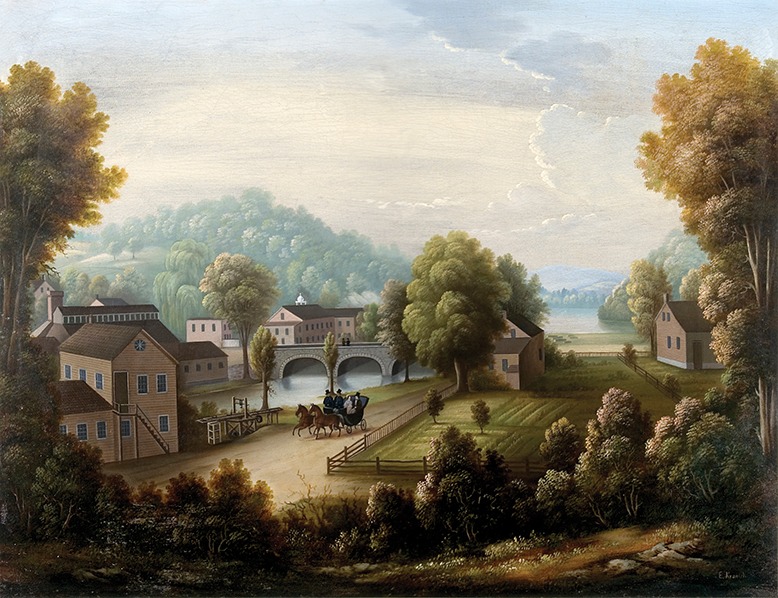
Speedwell Village and Iron Works by Edward Kranich is in the collection of Macculloch Hall. Photo courtesy of Macculloch Museum/Stan Freeny
The floorboards creak as you stroll through the period rooms of this early-19th-century mansion. Impressive furnishings, oils (including a circa-1796 Charles Willson Peale portrait of George Washington) and selections from the museum’s treasure trove of antique china adorn each room. The museum also boasts an unparalleled collection of works by 19th-century cartoonist Thomas Nast, whose home stands across the street. In March, the museum unveiled two restored, 11-foot-long Nast cartoons. —KS
45 Macculloch Avenue; 973-538-2404
Stoutsburg Sourland African American Museum
Skillman
Most museums are significant for the treasures they house; in the case of SSAAM, the real treasure is the house itself—a modest, beadboard-clad structure that was originally home to the Mt. Zion African Methodist Episcopal Church. Descendants of slaves built and worshipped in the building, and the region’s history of slavery—and the lives of those who survived it—has literally been written into the interior panels by the museum’s founders. SSAAM is currently only open for appointment-only tours. —LGP
189 Hollow Road; 609-309-5155
Walt Whitman Museum
Camden
From 1884 until his death in 1892, Walt Whitman spent his declining years here in the first and only house he owned on Mickle Street (now Martin Luther King Boulevard). In this sparse, six-room home, the poet revised his magnum opus, Leaves of Grass, along with penning other works and hosting famous contemporaries. From this home base, Whitman journeyed to nearby Barnegat and Atlantic City, which he documented in letters and essays. On display here are letters, rare photos and personal belongings. His tomb—of which Whitman himself oversaw the construction—is also in Camden, several miles away. —DPC
330 Martin Luther King Jr. Boulevard; 856-964-5383
Camden Shipyard and Maritime Museum
Camden
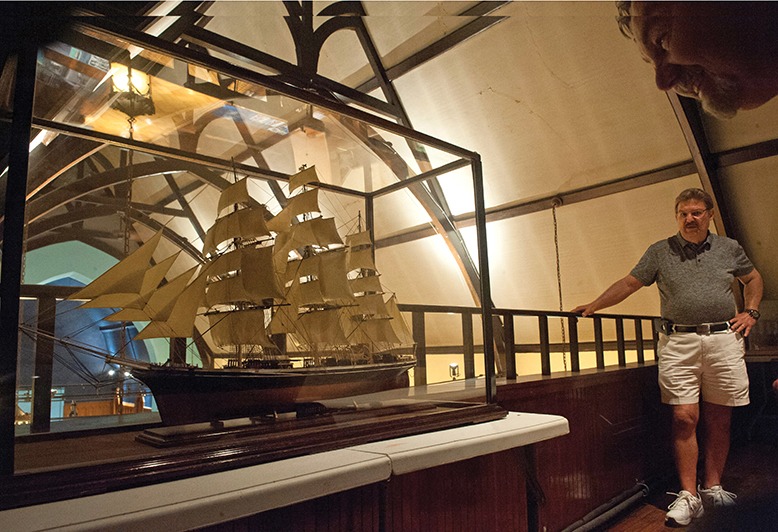
Camden Shipyard Museum features intricate ship models like this one. Photo courtesy of Jose F. Moreno/USA TODAY NETWORK
With about 6 miles of Delaware River waterfront, Camden put it to good use. This museum documents the city’s history of ship construction, which spanned more than 150 years. The aircraft carrier USS Kitty Hawk and heavy cruiser USS Indianapolis, which carried vital components of the atomic bomb dropped on Hiroshima and were later sunk by the Japanese, were built in the city. One wing houses Urban BoatWorks, a program that teaches students how to build boats. —Tom Wilk
1912 S. Broadway; 856-541-7447
Miller-Cory House
Westfield
Now the bucolic suburb of Westfield, in the 1740s it was farmland in the town of West Fields, a section of the area then called Elizabeth Town. Samuel Miller was a prominent farmer who built his home on a parcel of the 100-acre plot he owned. Nearly fifty years later, the house was purchased by a neighboring farmer, Joseph Cory. These two families remained the only owners of the property until 1921. Today, this living-history museum serves as an example of early-American life. Hosted events include early-American crafts like cheese-making. —DPC
614 Mountain Avenue; 908-232-1776
Long Beach Island Historical Association Museum
Beach Haven
(Editor’s note: The museum is closed for the off-season.) Just a half-mile down the boulevard from some of Long Beach Island’s most bustling sites sits a quaint reminder of its past. Located in the former Holy Innocents Episcopal Church, built in 1882, the LBI Museum is chock-full of artifacts, photos and archives (plus charmingly creaky floorboards). From shipwrecks to shark attacks to the lost resort of Tucker’s Island, there’s a history lesson for everyone to enjoy. —Jennifer Finn
129 Engleside Avenue; 609-492-0700
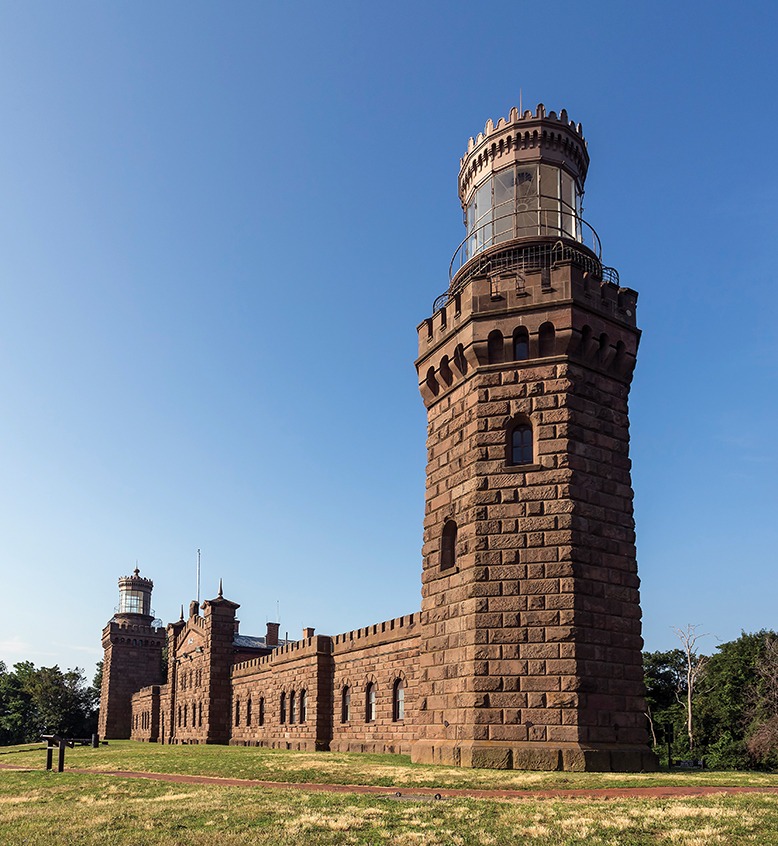
The Twin Lights Historic Site is one of the highest points along the Atlantic coast. Courtesy of Wikimedia
Twin Lights State Historic Site
Highlands
Climb the narrow, spiral stairs to the top of the north tower of this castle-like landmark that commands one of the highest spots along the entire Atlantic coast of the United States, and marvel at the panoramic view—over the ocean, around Sandy Hook, and all the way to New York City. Then climb back down to the museum in the old keepers’ quarters that illuminates all the history this place has witnessed—from America’s Cup races to Marconi’s wireless-telegraph experiments. —KC
2 Lighthouse Road; 732-872-1814
Ridgewood Historical Society Schoolhouse Museum
Ridgewood
Housed in an 1872 schoolhouse, this quaint museum boasts original features—like the potbelly stove—plus a robust collection of local artifacts. Annual themed exhibitions have covered historical events that range from the Revolutionary War through the 1960s revolution, as well as fashion and social norms. —Amanda Staab
650 E. Glen Avenue; 201-447-3242
Old Barracks Museum
Trenton
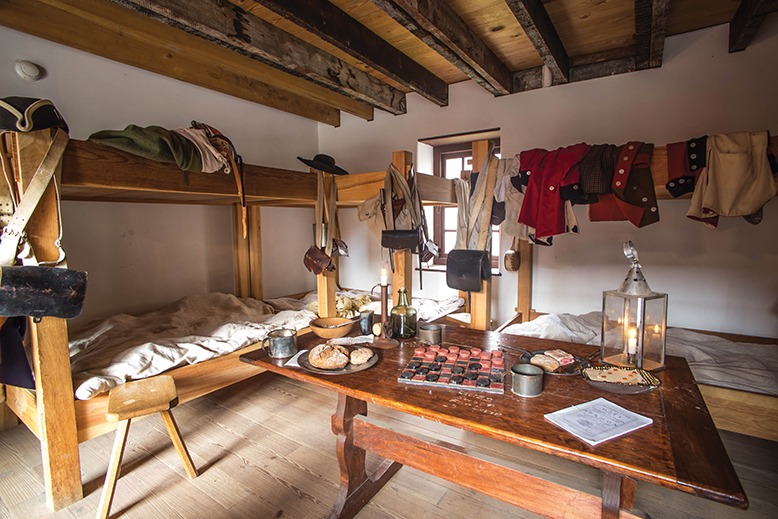
Trenton’s Old Barracks Museum offers a glimpse into Colonial life. Photo courtesy of Old Barracks Association
Near the New Jersey State House, the museum brings to life Colonial and Revolutionary history. Built in 1758 as winter quarters for British soldiers during the French and Indian War, the large stone structure is one of the most visited sites in the state. It also served as an army hospital during the Revolutionary War and as a residence for Trenton’s first mayor. Tours from guides in period dress are available, as are virtual tours for students. —AS
101 Barrack Street; 609-396-1776
Paterson Museum
Paterson
Housed in a 19th-century locomotive factory, the museum documents Paterson history from Lenape days (represented by pre-Colonial tools) to the city’s heyday as an industrial powerhouse. The exhibits of locally manufactured innovations include silk looms, massive airplane engines, and an impressive display of more than 30 Paterson-built Colt revolving pistols and rifles. Also represented: hometown heroes Larry Doby and Lou Costello. —KS
2 Market Street; 973-321-1260
Tuckerton Seaport & Baymen’s Museum
Tuckerton
Once used for domestic and international trade and now part of a reserve, the 40-acre Tuckerton Seaport encompasses more than a dozen historic and replica buildings, a boardwalk, a marine railway and a lighthouse. Museum exhibitions explore the natural environment, as well as local history and folk art. Boat rides are offered. —AS
120 W. Main Street; 609-296-8868
Washington’s Headquarters Museum
Morristown
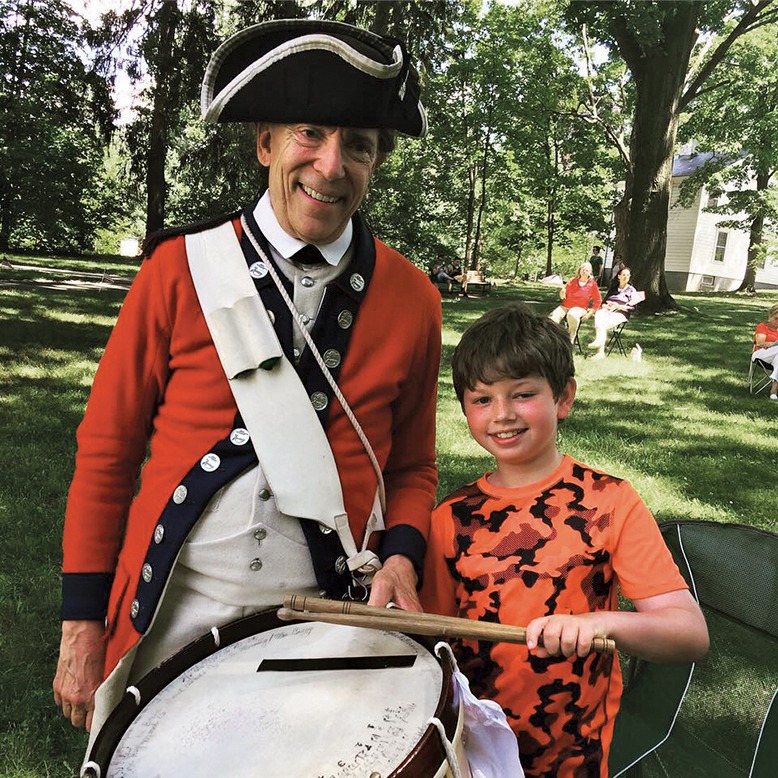
Go back in time at Washington’s Headquarters Museum, located in Morristown. Photo courtesy of Tom Ross/Washington Headquarters Museum
The museum’s Style Gallery displays household and personal items from the Colonial era, including a lace cap, dress and slippers believed to have belonged to Martha Washington. The Military Gallery has weapons and equipment of war, including George Washington’s sword. There’s a terrific display of manuscripts by the likes of John Hancock and John Adams, as well as Washington’s will. Museum visits are accompanied by a tour of the neighboring Ford Mansion, where Washington and his aides spent the winter of 1779-1780. —KS
30 Washington Place; 973-539-2016 ext. 210
SCIENCE & TECH
Thomas Edison National Historic Park
West Orange
The historic park comprises the prolific inventor’s laboratory complex and nearby home. The three-story main-lab building features Edison’s impressive, wood-paneled library; his machine shops (where tools and prototypes were fabricated); an exhibit hall lined with Edison inventions (including his first phonograph, Edison bulbs and more); and his recording studio. Adjacent buildings include the chemistry lab where Edison developed his recording cylinders. A visit includes access to the grounds of Glenmont, Edison’s family home. —KS
211 Main Street; 973-736-0550
Franklin Mineral Museum
Franklin
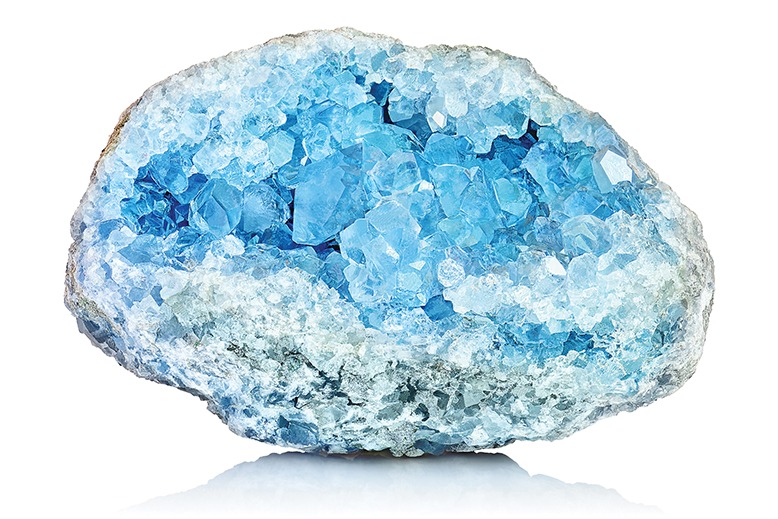
The Franklin Mineral Museum has more than 4,000 local specimens. Photo courtesy of Shutterstock/Sebastian Janicki
On a former New Jersey Zinc Company site, the museum preserves mineral wealth that made the Franklin-Sterling Hill mining district recognized worldwide. Its collection of zinc ore and mineral specimens includes more than 4,000 from the local area. Fluorescent rock and fossils are also on display. An 1895 engine house contains a replica of an underground mine. Outside, there are 3.5 acres for collecting minerals. —AS
32 Evans Street; 973-827-3481
Aviation Hall of Fame & Museum of New Jersey
Teterboro
Mammoth aircraft engines, the first hovercraft, a meteorological satellite—all were conceived in New Jersey and are on display at this museum adjacent to Teterboro Airport. Other displays feature aviation pioneer Charles Lindbergh, artifacts from the ill-fated Hindenburg airship, the state’s early African-American flyers, and our 14 astronauts. Hall of Fame plaques commemorate more than 180 inductees. Kids enjoy climbing into Little Cut Up, a model plane with a realistic cockpit. —KS
400 Fred Wehran Drive; 201-288-6344
No one knows Jersey like we do. Sign up for one (or more!) of our newsletters to get the best of where we live sent to your inbox. And for even more fun things to do around the Garden State, buy our March 2022 issue here.



